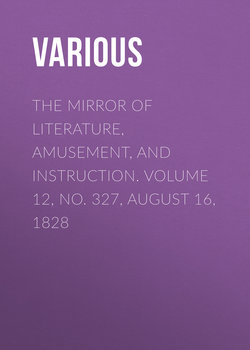Читать книгу The Mirror of Literature, Amusement, and Instruction. Volume 12, No. 327, August 16, 1828 - Various - Страница 5
ROSAMOND'S WELL AND LABYRINTH
CHILDE'S TOMB
Оглавление(For the Mirror.)
From "time out of mind" a tradition has existed in Dartmoor, Devon, and is noticed by several writers, that one John Childe, of Plymstock, a gentleman of large possessions, and a noted hunter, whilst enjoying that sport during a very inclement season, was benighted, lost his way, and perished through cold and fear, in the south quarter of the forest, near Fox-tor, after taking the precaution to kill his horse, (which he much valued), as a last resource, and for the sake of warmth and prolonging life, to creep into its bowels, leaving a paper, denoting, that whoever should find and bury his body, should have his lands at Plymstock.
"The furste that fyndes and bringes me to my grave,
The landes of Plymstoke they shal have."
This couplet was found on his person afterwards. Childe, having no issue, had previously declared his intention of bestowing his estates upon the church wherein he might be buried, which coming to the knowledge of the monks of Tavistock, they eagerly seized the body, and were conveying it to that place; but learning on the way, that some people of Plymstock were waiting at a ford to intercept the prey, they cunningly ordered a bridge to be built out of the usual track, thence pertinently called Guile-bridge, and succeeding in their object, became possessed of the lands until the dissolution, when the Russell family received a grant of them, and still retain it.
In memory of Childe, a tomb was erected to him in a place a little below Fox-tor, where he perished, which stood perfect till about fifteen years since; but it has been destroyed by some ignorant "landlord or tenant," for building materials, and it is now in a ruinous condition. It was composed of hewn granite, the under basement comprising four stones, six feet long by four square, and eight stones more, growing shorter as the pile ascended, with an octagonal basement, above three feet high, and a cross affixed to it. The whole, when perfect, wore an antique and impressive appearance, and it may now, as it is, be looked upon as an object of antiquity and curiosity.
A socket and groove for the cross, and the cross itself, with its shaft broken, are the only remains of this venerable tomb, on which Risdon says there was an inscription, but now no traces of it are visible.
W. H. H.
